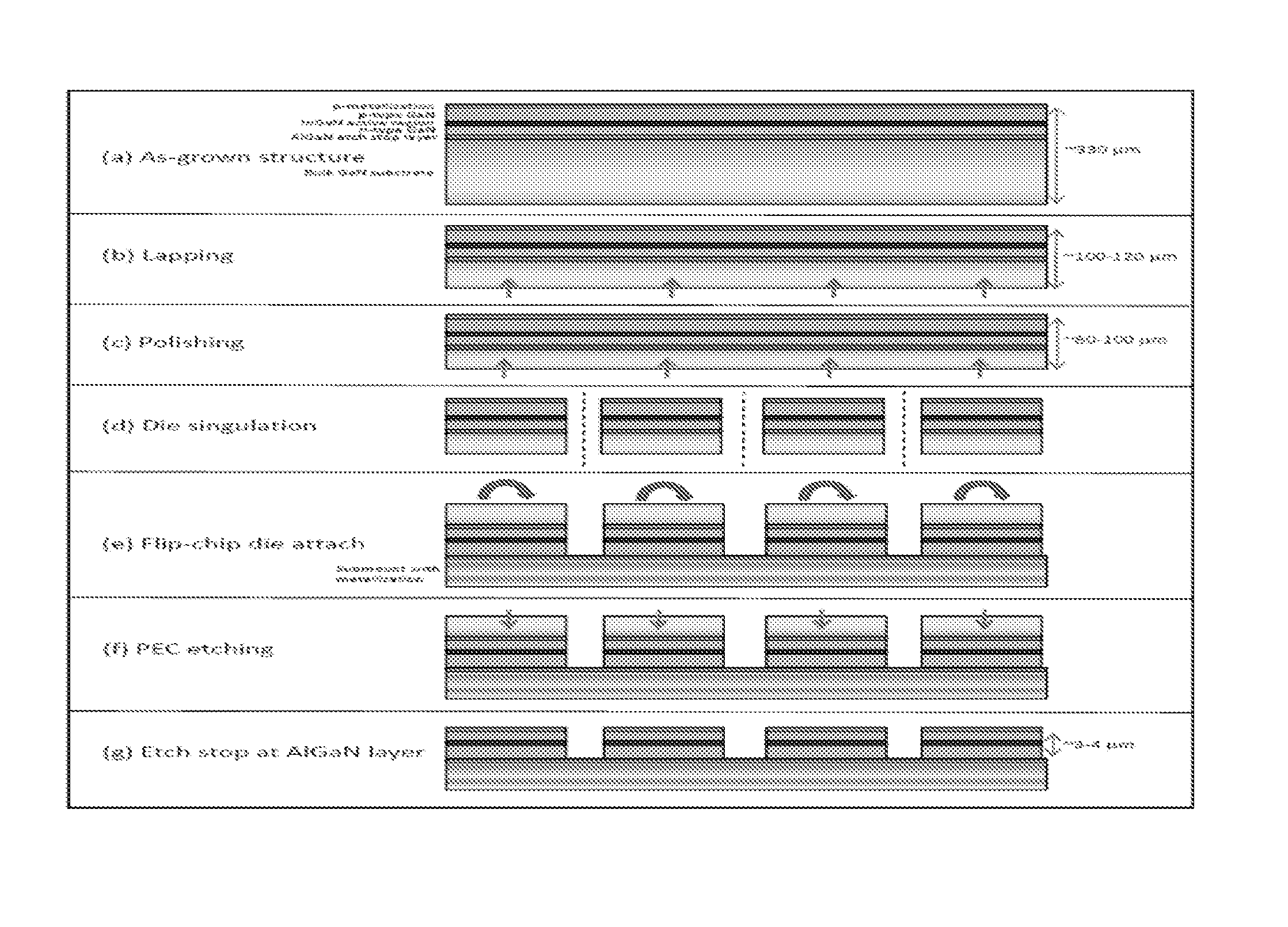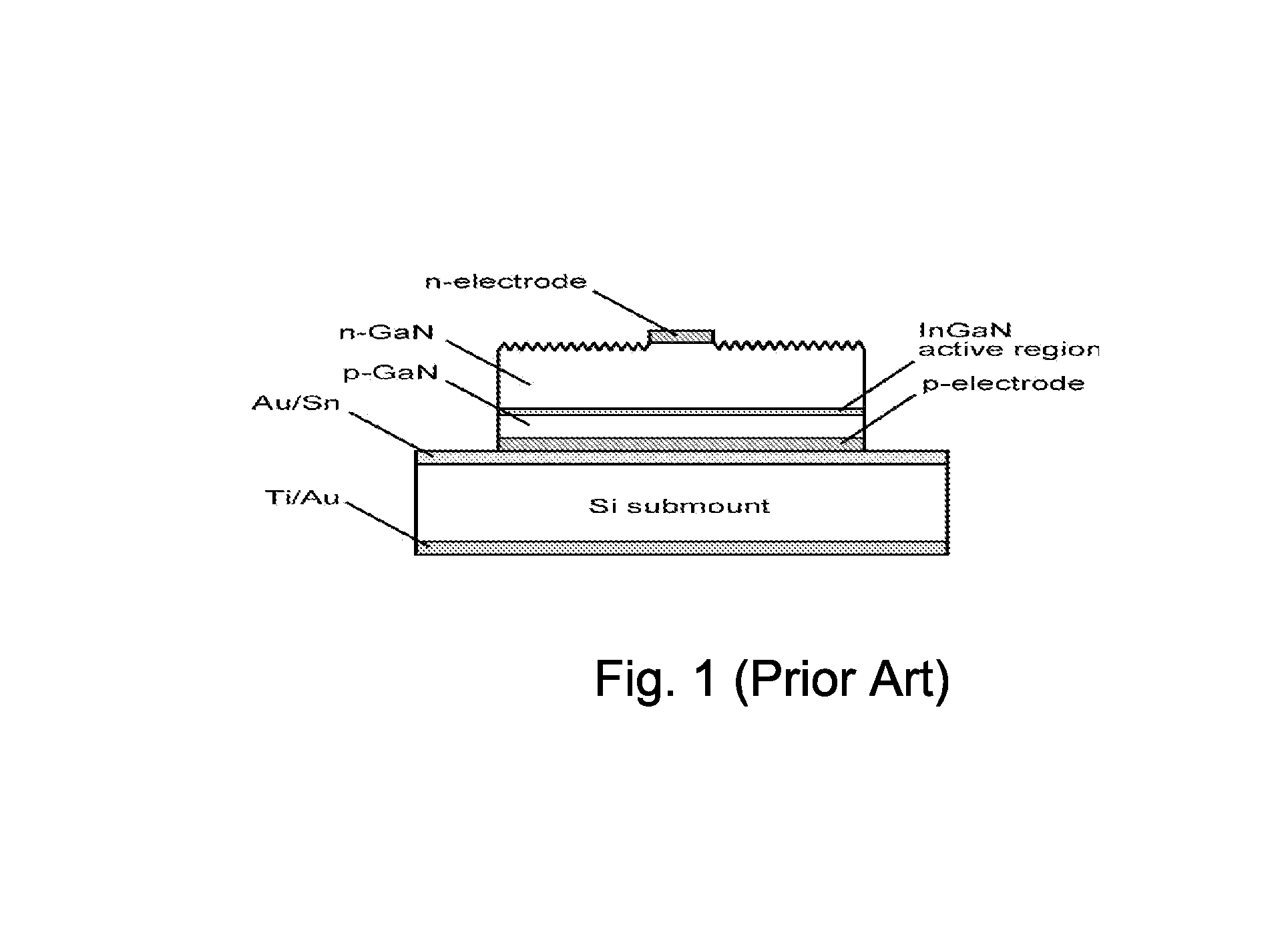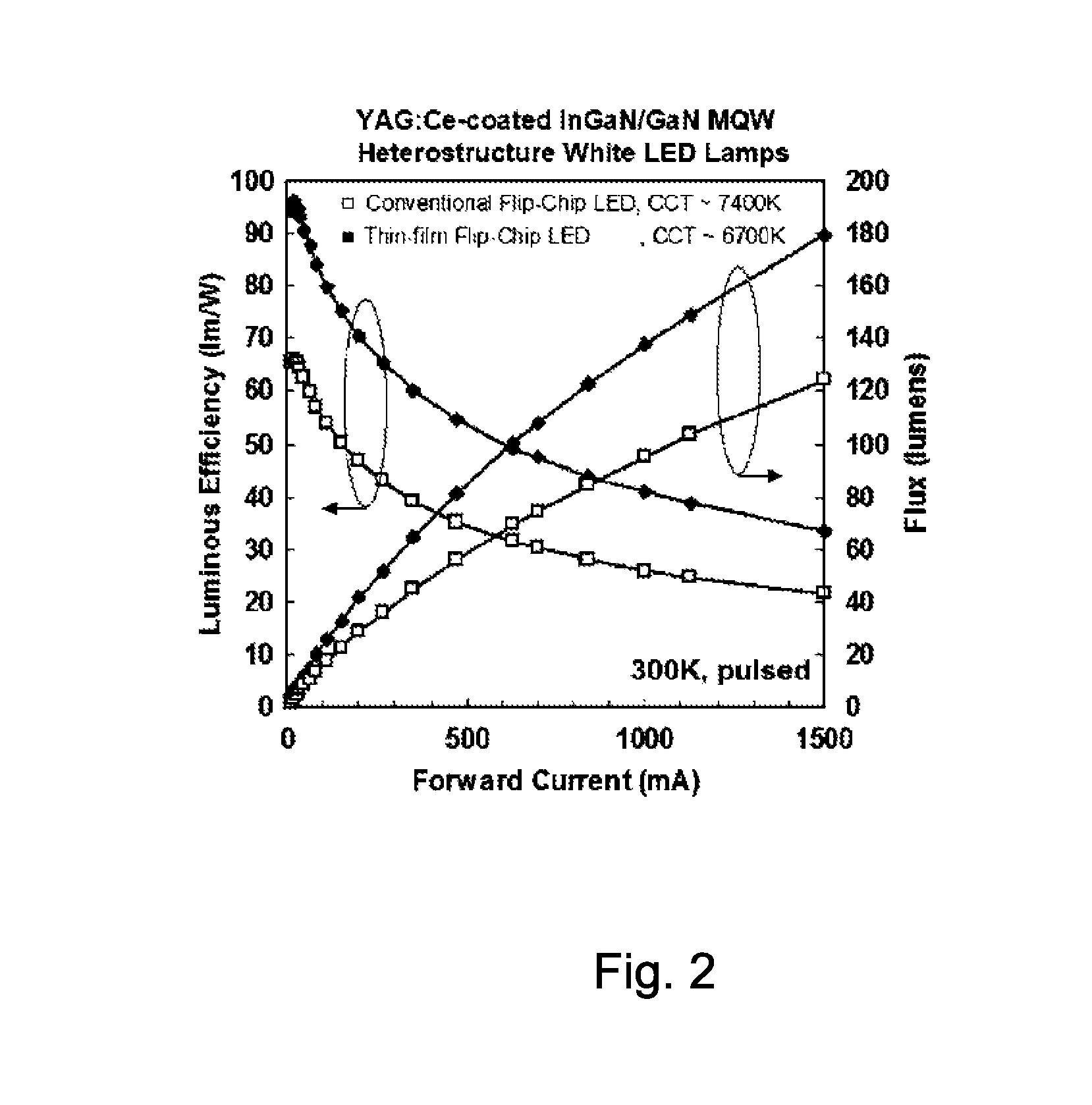Method and structure for manufacture of light emitting diode devices using bulk GaN
a light-emitting diode and bulk gan technology, applied in the direction of semiconductor devices, basic electric elements, electrical apparatus, etc., can solve the problems of inapplicability, inability to achieve separation based on conventional methodologies previously described, and inability to enable a short optical cavity length, etc., to achieve cost saving, increase the effect of radiative recombination efficiency and higher iqe of devices
- Summary
- Abstract
- Description
- Claims
- Application Information
AI Technical Summary
Benefits of technology
Problems solved by technology
Method used
Image
Examples
Embodiment Construction
[0024]In one or more specific embodiments, the present invention provides a variety of different process configurations and structures, with a desire of developing a robust, high-extraction-efficiency LED platform designed specifically around high-internal quantum efficiency (IQE) LED devices on bulk-GaN substrates. As previously discussed, the primary technical challenge in implementing existing high-extraction device configurations using bulk-GaN substrates or related bulk nitride-containing substrates, is transitioning from the epilayer-plus-substrate thickness of crystalline material to a reduced thickness of crystalline material (just 3-4 um or 200 nm to 5 micrometers) according to a specific embodiment). In a specific embodiment, a surface texturing step can be added to the present method and structure to increase light extraction efficiency.
[0025]FIG. 2 is a simplified plot of light output and luminous efficiency vs. current comparisons between white LED lamps based on YAG:Ce...
PUM
| Property | Measurement | Unit |
|---|---|---|
| thickness | aaaaa | aaaaa |
| thickness | aaaaa | aaaaa |
| thickness | aaaaa | aaaaa |
Abstract
Description
Claims
Application Information
 Login to View More
Login to View More - R&D
- Intellectual Property
- Life Sciences
- Materials
- Tech Scout
- Unparalleled Data Quality
- Higher Quality Content
- 60% Fewer Hallucinations
Browse by: Latest US Patents, China's latest patents, Technical Efficacy Thesaurus, Application Domain, Technology Topic, Popular Technical Reports.
© 2025 PatSnap. All rights reserved.Legal|Privacy policy|Modern Slavery Act Transparency Statement|Sitemap|About US| Contact US: help@patsnap.com



